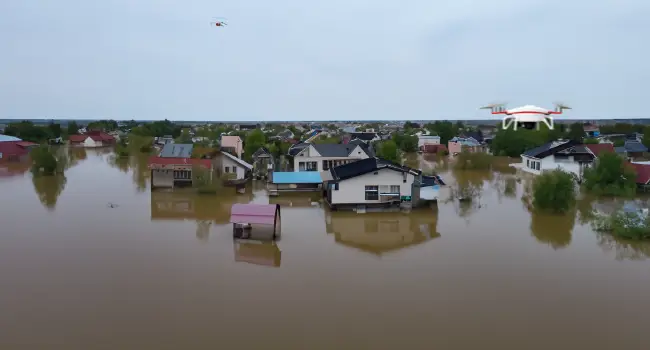Search and Rescue Drones

Search and rescue missions are crucial operations that require timely and accurate information to be successful. In recent years, drones have become increasingly important tools for search and rescue operations. Search and rescue drones are unmanned aerial vehicles (UAVs) equipped with cameras, thermal sensors, and other technologies that aid in the search for missing people and assist in rescue efforts.
One of the main advantages of search and rescue drones is their ability to access areas that may be difficult or dangerous for humans to reach. For example, drones can fly over rough terrain, dense forests, and bodies of water, providing a bird’s eye view of the area and locating individuals who may be in distress. Drones can also cover large areas quickly and efficiently, which is particularly important when time is of the essence.
Search and rescue drones come in a variety of sizes and shapes, ranging from small quadcopters to larger fixed-wing aircraft. The type of drone used depends on the specific needs of the operation. For example, quadcopters are ideal for quick, low-altitude searches, while fixed-wing drones are better suited for longer flights and covering larger areas.
One of the most important technologies used in search and rescue drones is thermal imaging. Thermal sensors can detect body heat and provide a clear picture of the surrounding environment, even in low-light conditions. This is particularly useful in search and rescue operations at night or in areas with limited visibility. Thermal imaging can also detect heat signatures of individuals who may be hiding or trapped, making it easier for rescue teams to locate them.
Another important technology used in search and rescue drones is real-time video streaming. Live video feeds from drones can provide valuable information to rescue teams on the ground, allowing them to make informed decisions about how to proceed with the operation. Video feeds can also be recorded and used for future analysis or training purposes.
In addition to aiding in the search for missing individuals, search and rescue drones can also assist in the rescue effort itself. For example, drones equipped with payload systems can drop supplies, such as food, water, and medical equipment, to individuals in need. This is particularly useful in situations where rescue teams are unable to reach the individual on foot.
However, it’s important to note that search and rescue drones are not a replacement for human search and rescue teams. Drones are simply another tool that can be used to aid in the search and rescue process. In fact, drone pilots often work alongside search and rescue teams on the ground, providing real-time information and assisting in the overall effort.
Search and rescue drones are valuable tools that can aid in the search for missing individuals and assist in rescue efforts. With their ability to access difficult-to-reach areas, cover large areas quickly, and provide valuable information to rescue teams on the ground, drones are becoming an increasingly important part of search and rescue operations. As technology continues to advance, we can expect to see even more innovative uses for search and rescue drones in the future like insect drone swarms that can fly through small gaps and communicate as a group.
Next up: Surveillance Drones

